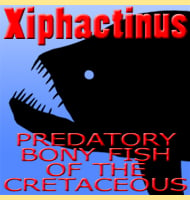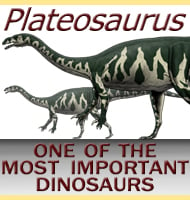In Depth
Dyslocosaurus is a genus of diplodocid sauropod dinosaur that lived in North America during the late Jurassic. It is unknown exactly where the type fossils of Dyslocosaurus are known from as when they were first discovered they only had ‘Lance Creek’ written on them. There is a Lance Formation that is named after the Lance Creek of Wyoming, but this is late Cretaceous in age, and diplodocid sauropods like Dyslocosaurus are so far only known from Late Jurassic deposits.
Currently there is still a great deal of uncertainty about Dyslocosaurus and not just about where exactly it came from. Whereas most diplodocid sauropod dinosaurs have three toes on the hind feet, Dyslocosaurus was initially described as having at least four if not five toes. Later in 2015 it was noted that a pedal phalanx assigned to Dyslocosaurus had a different colouration to the others, suggesting a different origin and not actually belonging to the other, meaning that Dyslocosaurus might have only had three like in related genera. Dyslocosaurus has also been described as a dicraeosaurid diploocid, something quite rare for the North American continent. However, the vertebrae with tall neural spines that would confirm this assessment are so far unknown to us.
Further Reading
- A new diplodocid sauropod (Dinosauria) from Wyoming, U.S.A. - Journal of Vertebrate Paleontology 12(2):158-167. - J. S. Mcintosh, W. P. Coombs & D. A. Russell - 1992. - A specimen-level phylogenetic analysis and taxonomic revision of Diplodocidae (Dinosauria, Sauropoda). - PeerJ 3: e857. - E. Tschopp, O. V. Mateus & R. B. J. Benson - 2015.









